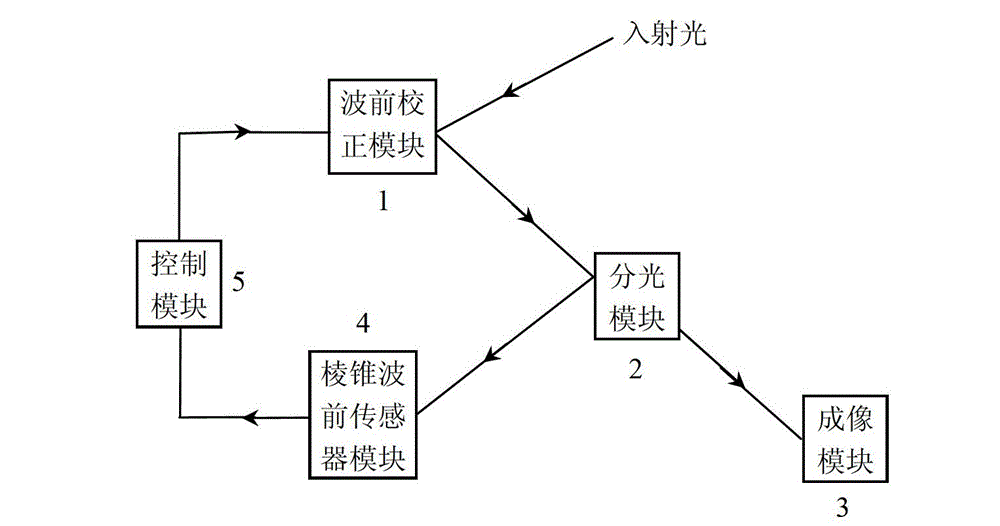Adaptive optical system based on modulation and modulation-free combined pyramid wave-front sensor
A wavefront sensor and adaptive optics technology, applied in measurement optics, optical radiation measurement, instruments, etc., can solve the problems of transfer function measurement error, increased influence, high detection frame frequency requirements, etc., to improve the measurement signal-to-noise ratio. , the operation process is simple, the effect of high detection sensitivity
- Summary
- Abstract
- Description
- Claims
- Application Information
AI Technical Summary
Problems solved by technology
Method used
Image
Examples
Embodiment Construction
[0018] Such as figure 1 As shown, the present invention is made of wavefront correction module 1, spectroscopic module 2, imaging module 3, pyramidal wavefront sensor module 4, and control module 5; wherein the pyramidal wavefront sensor module is as figure 2 As shown, it is composed of a modulating tilting mirror 6, a focuser 7, a pyramid 8, a subsequent focuser 9 and a detector 10. The wavefront correction module is composed of a tilting mirror and a deformable mirror. The tilting mirror and the deforming mirror can adopt a piezoelectric ceramic drive structure , or MEMS structure, or liquid crystal structure.
[0019] After the light beam passes through the pyramidal wavefront sensor module 4, it will correspond to four detection sub-pupil image areas on the detector 10. In this embodiment, the number of sampling points in each sub-pupil image area is n; the closed-loop control of the adaptive optics system needs to adopt a fixed closed-loop Control modes, currently commo...
PUM
 Login to View More
Login to View More Abstract
Description
Claims
Application Information
 Login to View More
Login to View More - R&D
- Intellectual Property
- Life Sciences
- Materials
- Tech Scout
- Unparalleled Data Quality
- Higher Quality Content
- 60% Fewer Hallucinations
Browse by: Latest US Patents, China's latest patents, Technical Efficacy Thesaurus, Application Domain, Technology Topic, Popular Technical Reports.
© 2025 PatSnap. All rights reserved.Legal|Privacy policy|Modern Slavery Act Transparency Statement|Sitemap|About US| Contact US: help@patsnap.com


